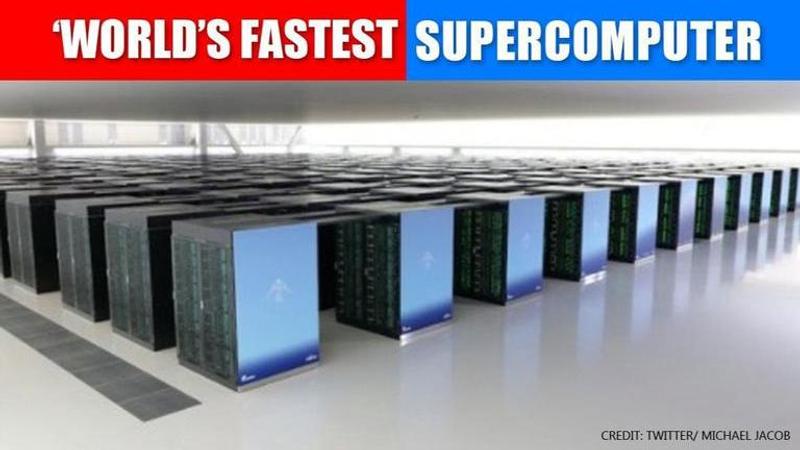Published 16:32 IST, June 23rd 2020
Japan's Arm-powered Fugaku becomes world's fastest supercomputer
It’s the first time a computer depending on ARM CPUs that can perform more than 415 quadrillion computations a second in Japan has topped the 500 list.

In the 55th edition of the biannual Top500 supercomputer velocity ranking, the Japanese ARM-based supercomputer, Fugaku, secured a top position as fastest in the world. A computer in Kobe co-developed by Riken and Fujitsu, it uses Fujitsu’s 48-core A64FX system-on-chip. It’s the first time a computer depending on ARM CPUs that can perform more than 415 quadrillion computations a second has topped the list.
The TOP500 site, which tracks the evolution of computer processing power wrote on its official website, “The new top system, Fugaku, turned in a High-Performance Linpack (HPL) result of 415.5 petaflops, besting the now second-place Summit system by a factor of 2.8x. Fugaku is powered by Fujitsu’s 48-core A64FX SoC, becoming the first number one system on the list to be powered by ARM processors.” Further, it said, these computers are often used in machine learning and AI applications, and Fugaku’s peak performance crosses at least 1,000 petaflops (1 exaflop). As per the release, these new, extraordinarily fast computer systems have been installed at RIKEN Center for Computational Science (R-CCS) in Kobe, Japan.
ARM owned by Japanese carrier SoftBank
As per RIKEN Center for Computational Science, where Fugaku supercomputer that replaced the Oak Ridge National Lab's Summit supercomputer has been installed, the supercomputers’ processor from ARM owned by Japanese carrier SoftBank took at least six years to design. According to US publications, the researchers are also using Fugaku to carry out extensive coronavirus research. The systems do not use dedicated GPUs to help with artificial intelligence applications and data analytics.
On the Top500 list, number two on the list is Summit, an IBM-built supercomputer that delivers 148.8 petaflops on HPL. The system has 4,356 nodes, each equipped with two 22-core Power9 CPUs. While number three is Sierra, a system at the Lawrence Livermore National Laboratory (LLNL) in California achieving 94.6 petaflops on HPL. Its architecture is very similar to Summit, equipped with two Power9 CPUs and four NVIDIA Tesla V100 GPUs in each of its 4,320 nodes. Sierra employs the same Mellanox EDR InfiniBand as the system interconnect.
Updated 16:31 IST, June 23rd 2020




